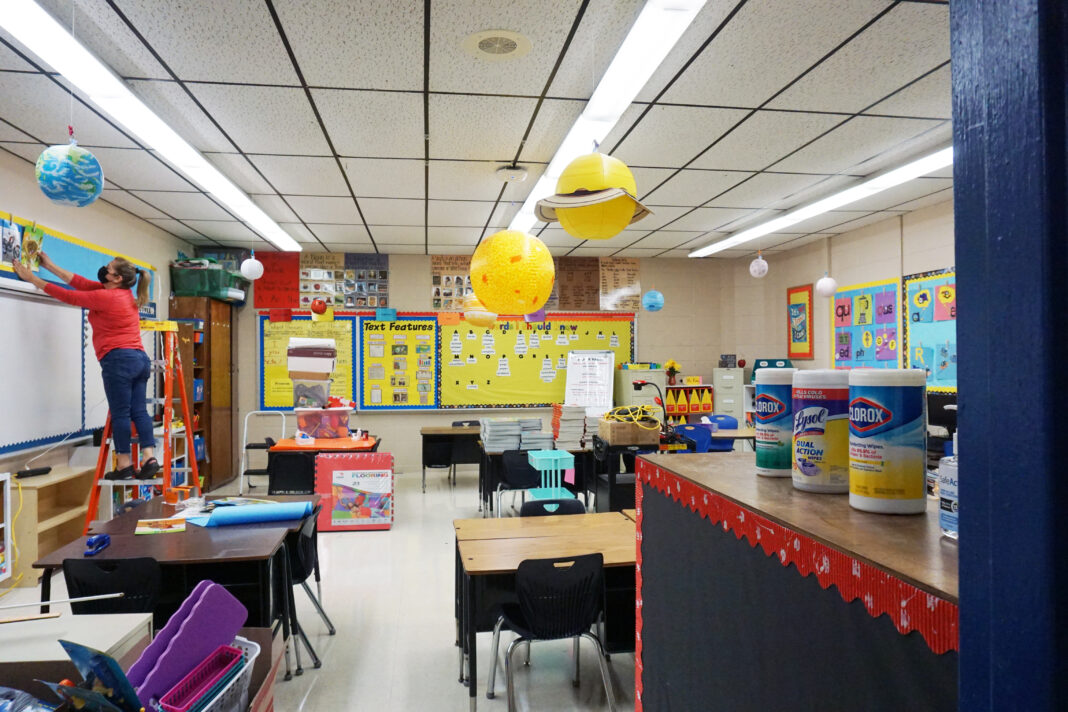Rio Grande Valley educators have faced their fair share of challenges over the past two years, but this semester local school districts find themselves facing yet another novel pandemic problem: personnel shortages.
While staffing shortages have popped up periodically throughout the pandemic, Valley schools — and many others across the state — are facing their first COVID-19 surge while most of their students and staff are on campus.
Although some Valley school districts have elected to extend their winter break for health reasons, none so far have extended their breaks or closed due to staff shortages.
They’re coping, local educational leaders say, even if it isn’t always easy.
Region One interim Executive Director Judith Solis says the chief problem locally is a shortage of substitute teachers, and doubts any local district has been immune to that shortage.
“I know some tell me that they’re doing very well, that they’re making it work, because they have enough employees,” she said. “But I think it’s an issue that they’re all facing.”
Region One’s services include connecting substitute teachers with school districts. Many of those substitutes, Solis said, are frightened — many of them don’t want to be exposed to the virus.
“You know, we have a good pool of teacher substitutes, but they go to the schools that they know and they don’t want to go to a different school. People are scared, I think. They’re scared,” she said.

Districts around Texas are increasingly paying substitutes to be brave.
Solis estimates pay rates for substitutes have gone up between 10% and 20% locally since the pandemic began.
“The pay is better,” she said. “The pay is definitely better for substitutes.”
San Antonio ISD approved paying certified substitutes in critical subject areas as much as $225 for teaching on Mondays and Fridays.
In December, the McAllen school board voted 6-1 to temporarily up its pay for degreed and certified substitutes from $140 per day to $180, with at least one trustee characterizing the move as a strategy to retain substitutes.
Information submitted to the district’s board said that rate would put them on par with one other district in the region and above 11 more.
District spokesperson Mark May said Monday that the district wasn’t experiencing any significant staffing shortages and didn’t need to bring any substitute teachers in since students hadn’t returned.
There were no shortages Wednesday either, May said.
“In fact, we are still accepting applications from potential substitutes,” he said.
Despite McAllen being fully staffed, Solis says substitute shortages remain an issue for virtually all districts in the area. There simply aren’t enough substitute teachers to go around, and districts are increasingly finding themselves in need of substitutes.
Edcouch-Elsa ISD approved additional leave for employees infected with COVID-19 at an emergency meeting Tuesday, and cases continue to rise locally.
Superintendent Greg Rodriguez says Edcouch-Elsa has adjusted internal staff to continue instruction, but substitutes are scarce.
“Substitute coverage in the valley, region, state, and nationwide continue to be an issue,” he wrote Wednesday. “The shortage may be attributed to the demand of the job market where there are 3 jobs for every 2 people seeking employment.”
Solis says that problem has been the source of many late nights in her office in recent days. She’ll get calls from superintendents, asking for educational gossip.
“What have you heard? What can we do? Is there a waiver?”
The long term solution, Solis says, is training a pool of local substitute educators — an effort she says Region One has been picking away at for years.
For many local educators, the short term solution is creativity.
“I think they’re starting to think totally out of the box, out of need,” Solis said. “We have some exceptional leaders throughout the Valley.”
Pandemic creativity isn’t easy, and Solis says she’s sympathetic toward the administrators responsible for conjuring it up.
In some local districts, she said, educators are taking a multi-age/multi-grade approach.
Essentially, classes are combined with a class above or a class below; perhaps two classes above or below.
Sometimes a bigger space is necessary for those combined classes, sometimes not.
“When you don’t have enough adults to cover classes, it’s hard, so what do you do? You put several classes in a big room — in a gym or in a cafeteria. You (an administrator) teach a class yourself,” she said.
Combining different age groups isn’t necessarily a bad thing, she said, though it’s still a measure borne out of necessity.
Solis says she wants kids in schools and feels that they’re safe there. Donna ISD Superintendent Angela Dominguez agrees.
“There’s no better instruction for our students, and we’ve seen that with the learning loss over the last two years as a result of COVID,” she said. “So our goal is to stay open.”
Donna saw students and staff return throughout the beginning of the week. Voluntary testing was high, and Dominguez says the district has seen a significant amount of staff absences.
In response, the district is calling central office staff into classrooms.
“So it’s all hands on deck,” Dominguez said. “Everybody’s going to be covering classrooms as long as we need to to support our campuses and our students.”
Dominguez doesn’t even leave herself off of potential classroom substitutes.
“It’s a win-win if we can keep students in the classroom safely,” she said.
Solis, the Region One interim director, says she feels creativity is the best solution for local districts, barring changes at the statewide level.
Those changes, she said, would include flexibility in attendance accountability and online learning options.
“We need to support our school systems. Principals, the campus leaders, the superintendents have so much that they’re going through right now,” she said, listing student safety, employee safety and attendance levels among those challenges. “We have good leaders out there, and we really need to band together and help each other.”




